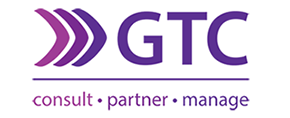Strategic & Tactical Asset Allocation – 3rd Quarter September 2020
GTC, where relevant to the Fund’s mandate, use a combination of Strategic Asset Allocation (i.e. investing across asset classes in a fixed ratio over long periods of time) and Tactical Asset Allocation (considered and measured changes to asset allocation within predefined limits). The GTC Asset Allocation Committee undertakes a quarterly asset allocation review and meets more frequently depending on market dynamics.
STeFI – 3rd Quarter September 2020
The STeFI (Alexander Forbes Short Term Fixed Interest Index) is a benchmark or measure of the returns earned in the South African money market. The money market consists of cash-like investments with a maturity of under one year and includes examples such as: Call deposits, Negotiable Certificates of Deposit (NCD), Treasury bills & Bridging bonds.
The Rand – 3rd Quarter September 2020
The rand recovered from its highs over the quarter though remained oversold relative to its long run trend as indicated by the orange line. Given the uncertain economic environment that we find ourselves in, we are likely to see the currency exchange rate remain volatile.
Global & Local Bonds – 3rd Quarter September 2020
Global Bonds Global bonds were certainly risk on in markets over the quarter underpinned by the gradual reopening of global economies, hopes of a Covid-19 vaccine, as well as government economic policy measures. The Federal Reserve announced its change to its inflation targeting regime in August indicating it would target an average 2% inflation rate but allow for periods of overshoot. This was well received by markets. Corporate bonds enjoyed a positive quarter as riskier assets became more attractive and government monetary policy helped consolidate yields at lower levels. Local Bonds The Reserve Bank’s monetary policy committee left the benchmark interest rate unchanged at 3.5% even as it revised down its forecasts for growth in an economy still navigating its way through the fallout from the coronavirus shock. The Bank revised its GDP forecasts and is now expecting the economy... Read More
Stimulatory Measures – 3rd Quarter September 2020
Stimulatory measures are typically used by governments and central banks as a package of economic measures put together to stimulate a stagnating economy with the objective being to reinvigorate the economy and prevent (or reverse) a recession by “stimulating” employment and spending. In the U.S. markets rose in Q3 on the back of continuing facilitating Federal Reserve monetary policy and early signs of a pickup in economic activity. The Federal Reserve will now employ average inflation targeting in setting interest rates which is indicative of prolonged liquidity easing. The provision of additional fiscal stimulus measures remains deadlocked as the parties, Democrats and Republicans, dispute as to the quantum of the stimulus to be provided.
Emerging Markets – 3rd Quarter September 2020
Emerging markets were the star performer for the quarter led by a surge in Chinese economic activity. The MSCI Emerging Market Index increased in value and outperformed the MSCI World Index. This was evidenced by the Chinese economy growing 3.2% y/y in Q2 of 2020, reversing a – 6.8% contraction in Q1 and beating market consensus of 2.5% growth amid relaxed lockdown measures. China’s economic recovery is however somewhat vulnerable to losing momentum as key trading partners struggle with resurgences of the deadly coronavirus and resort to fresh measures to control its spread. Tensions with the U.S. escalated during the quarter including new restrictions on Chinese company Huawei and President Trump’s executive order preventing US companies from doing business with TikTok and WeChat. Chinese Q2 earnings results were also ahead of expectations particularly in the e-commerce sector.
Global Markets – 3rd Quarter September 2020
U.S. Even though September ended as a down month, overall Q3 was positive. All the major indices improved over the quarter the S&P 500 up 8.2%,the NASDAQ up 11.0% and the Dow Jones Industrial Average up 7.4%. Big Tech (Amazon, Apple, Alphabet, Facebook and Microsoft) counters were some of the best-performing stocks over the past quarter. The Federal Reserve’s use of average inflation targeting suggests that rates could be almost zero bound up to and including 2023. Markets reflected ongoing uncertainty in the later part of Q3 amid a resurgence of the virus in Europe as well as a continuation of the number of new cases in various U.S. States. Adding to the uncertainty is the upcoming Presidential election on the 3rd November with its inherent problems. U.S. unemployment numbers declined down to 8.4% in August from July’s 10.2% and... Read More
Local Equity Market – 3rd Quarter September 2020
The JSE/FTSE All Share performance for the quarter was somewhat pedestrian but nevertheless remained positive returning 0.67% with the JSE/FTSE SWIX delivering -0.33%. Covid-19 escalated during the quarter but the authorities have to be congratulated on the manner in which the pandemic was managed. Most market sectors delivered lackluster or negative performance as both political and economic uncertainty continued to undermine investor confidence. Overall market performance was fortunately supported by rallies in both gold and platinum counters which both attracted increased demand. The Resources sector returned 5.71% for the quarter and was by far the best performer. Financials managed to muster a positive return of 0.47% despite having come under repeated selling pressure. The Industrial sector eased as Naspers sold off in line with global tech stocks delivering a negative – 2.29% for the quarter. The Property sector came in... Read More
The ONE Minute Brief – 23 October 2020
The GTC ONE Minute Brief covers the following topics: Economic and Political News Major South Africa Corporate News Major Global Economic News Technical Snapshot Download the full GTC ONE Minute Brief.





